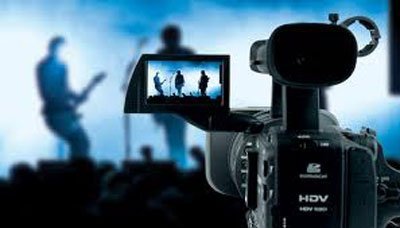Let Your Career Roll with The Camera
There was a time when videography was considered to be a source of coverage of marriage or family programmes. But today videography has risen as a career, where there are great possibilities for young people. By looking at the scope of satellite channels and changes happening in the field of electronic media there is a lot which can be done in the field of videography.
People who produce those programmes which we see in T.V. with full interest along with our family, are known as “Videographers”. With revolutionary changes in Doordarshan and opening up of new channels there is a growing demand of videographers. Although all the programmes which are going in air, is a whole team’s contributions but the role of a videographer is most important. Today we can see live at once through television, whatever is happening in the world.
Today viewers can watch not only quality programmes but have the option to choose the channel of their own liking or interest. Today some of the channels, which are broadcasting these programmes, comes under the category of high tech digital channels. India’s big industrial families and renowned companies are preparing to launch their channels in coming next 2-3 years. So, it is certain that there will be an increase in demand for “Videographers”. Mr. K.C Bishnoi, who is Managing Director of a renowned electronic media agency”. “Filmco Photo News” says that in this field there is a great demand for trained “videographers” and “cameramen”. There is a great change in improvement in quality of the programmes with the use of “Beta-cam” and digital “Beta-cam” in the field of videography as compared to ‘U-metic’ camera.

According to Mr. K.C. Bishnoi, videography is an art of featuring scenes with right angle and accurate light arrangement. People joining this field become more experienced in short span of time and with this, sharpness and improvement comes in their work. Actually it is a first step in the direction of making movies, because it is videography, which after growth and improvement reaches to cinematography. The only difference between these two processes is that of quality and use of different types of cameras. Videography is used to telecast T.V. and Video programmes, where as cinematography is used to makes movies and advertisement films.
Mr Bishnoi strongly believes that people who have done photography for print media with still camera, for them videography is very easy. Cinematography is an expensive medium where as videography work can be done within limited budget. This is the reason why people working on big screens can now be seen making programmes for different T.V channels.
There are great possibilities of progress and promotion in the field of videography. Today videographers are earning right from Rs. 5,000/- to 50,000/- per month for young men and women in the country who were searching a career in videography, many institutions are offering various courses. There is even a provision for admission after intermediate. If you are related to the world of media then you are expected to be successful.
There are people who after taking training are working as a freelancer videographer and are earning money on the basis of footage of their programme and its quality.
Training Institutes
- Asian Academy of Film and Television, Noida (U.P)
- Film and Television of India, Law College Road, Pune (Maharashtra)
- Indian Institute of Mass Communication, Aruna Asif Ali Marg, J.N.U Campus, New Delhi – 110067
- Jamia Mass Communication and Research Centre, Jamia Milia University, New Delhi

